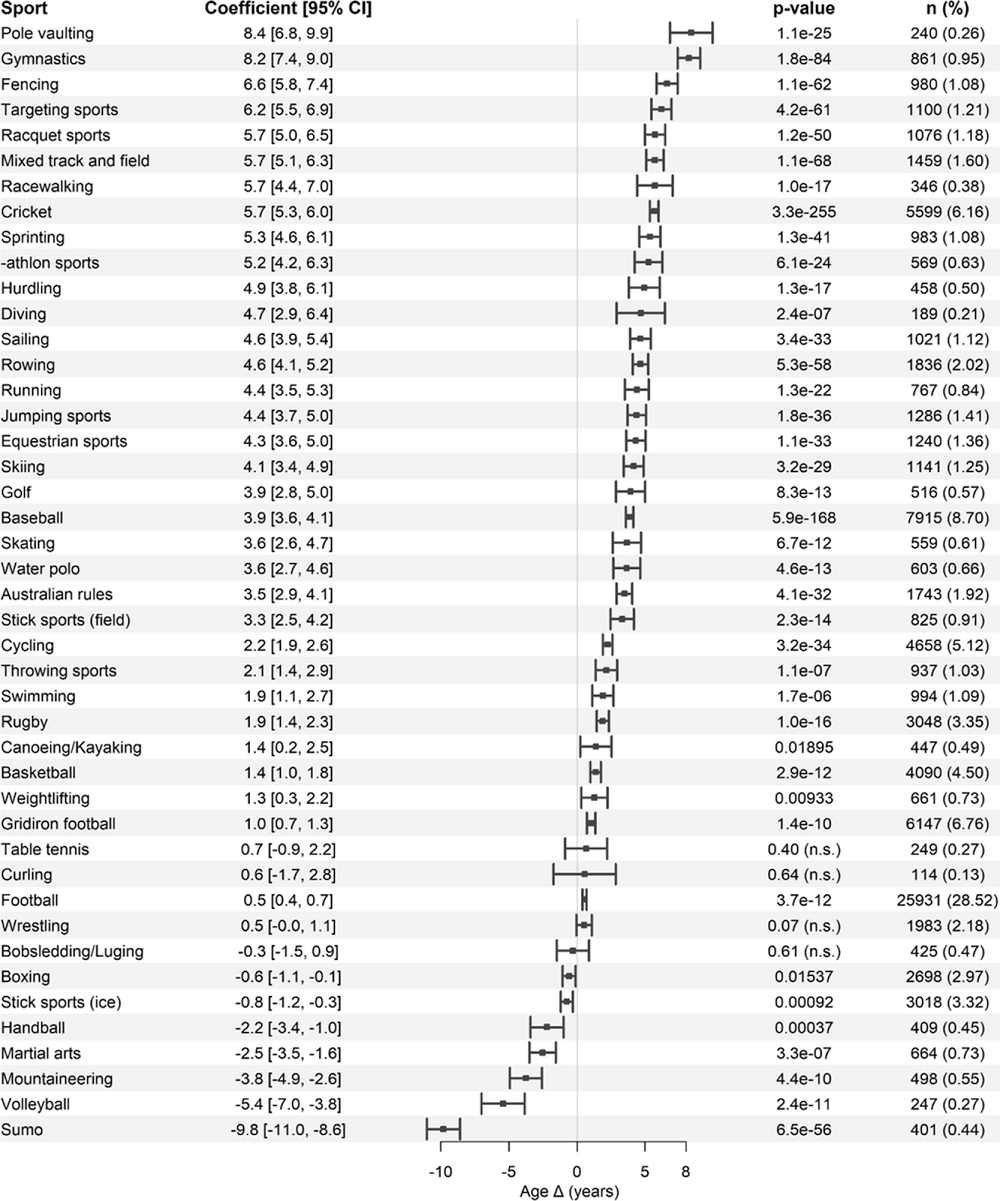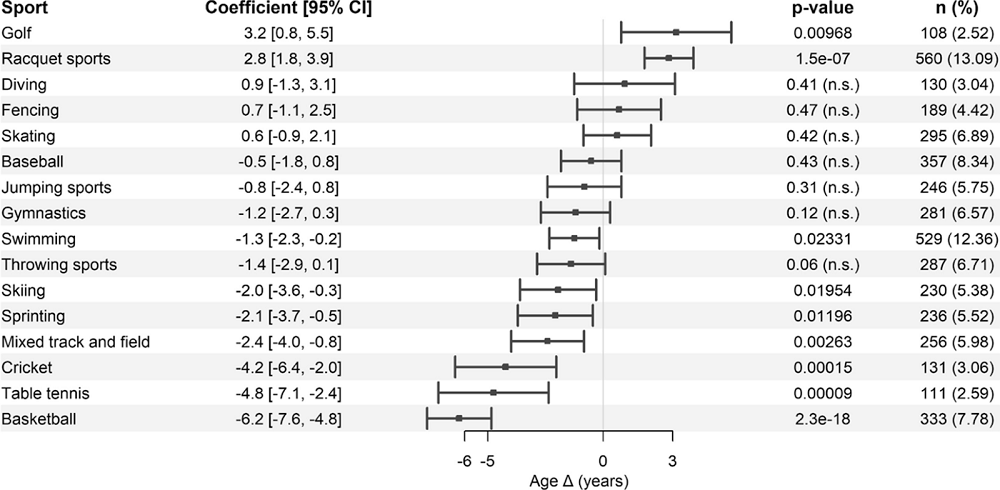A new study analyzed how being an elite athlete in various sports affects human lifespan. Some of the results were surprising [1].
Elite sports and aging
Longevity enthusiasts have long wondered if professional athletes live longer than the general population and what sports show stronger associations with lifespan. In a new study published in the journal GeroScience, a group of scientists from Holland attempted to research this using data on tens of thousands of elite athletes born between 1862 and 2002. The sample encompassed 183 countries and 44 sports disciplines.
The data was collected by the researchers themselves using public sources. The effect on lifespan was determined by comparing the ages of athletes with those of the corresponding reference populations, and the results were adjusted for sex, year of death, and country. The vast majority of the athletes were males, which limited the study’s applicability to the female population.
Volleyball, what’s wrong with you?
The study yielded both expected and intriguing results. In males, the highest life extension was observed for pole vaulting and gymnastics (8.4 and 8.2 years, respectively). Racquet sports and mixed track and field were not far behind (5.7 years both). In general, most sports were associated with statistically significant life extension, with soccer and wrestling showing some of the smallest positive effect sizes.
However, there were several outliers. Sumo was associated with a massive 9.8-year negative effect on lifespan. Surprisingly, volleyball came in second (-5.4 years), followed by mountaineering (-3.8 years), martial arts (-2.5 years), and handball (-2.2 years). Other notable sports with negative, albeit smaller, effect sizes, were ice hockey (-0.8 years) and boxing (-0.6 years).

Since the sample contained much fewer female athletes, associations for them were not as clear-cut. From the limited list of sports in the female subset, only golf and racquet sports showed significant positive effects on lifespan (3.2 and 2.8 years, respectively).
Interestingly, contrary to what was observed in males, most sports seemed to have negative effects on female lifespan. Those with significant effect sizes included basketball (-6.7 years), table tennis (-4.8 years), cricket (-4.2 years), mixed track and field (-2.4 years), sprinting (-2.1 years), and skiing (-2 years).

Interpreting the results
Populational studies like this one can only show correlations and not causative effects, and interpreting their results can be notoriously difficult due to the abundance of confounding factors. The researchers discuss, at length, possible explanations for their findings but admit that those are mere speculations.
One hypothesis that seems plausible is that sports that combine aerobic and anaerobic activity, both of which are associated with health and longevity [2], produce the largest positive effect. However, this was not the case for martial arts and boxing, most probably because of the high risk of injuries.
Sumo is a great illustration of the deleterious effects of a high-calorie diet and obesity that cannot be offset even by high levels of exercise. That said, the length of a professional career in sports usually does not exceed two or three decades, and in later life, the amount of physical activity is expected to decline.
The origins of the sex gap observed in this study are unclear. The researchers note that the male population, especially in earlier cohorts, is more prone to unhealthy habits, and “participation in sports may prompt males to minimize such habits, leading to a more profound impact of sports on their lifespan.”
Females, on the other hand, lead healthier lives on average, which decreases the populational effect of giving up unhealthy habits. Differences in aging processes in men and women, such as menopause, might account for some of the effect, too.
Various studies have tried to understand the health impact of extremely strenuous exercise, which elite athletes routinely engage in. The results are largely inconclusive, but some evidence suggests that too much exercise can be harmful.
The researchers were surprised by the large negative effect on lifespan associated with volleyball in both sexes and with handball in men. “We hypothesize,” they write, “that the physical trauma that volleyball players are exposed to [3] may instigate severe skeletomuscular stress, which impacts healthspan, and, in the long term, lifespan.”
In summary, this study established an association between various types of sports and the lifespan of a diverse cohort of international athletes. The impact on lifespan varies across sports, with notable differences between male and female athletes. While male athletes experienced a mostly favorable lifespan extension, with an increment of up to 8 years across different sports, female athletes had limited and scarce data, thus limiting our ability to draw definitive conclusions regarding this association.
Literature
[1] Altulea, A., Rutten, M. G., Verdijk, L. B., & Demaria, M. (2024). Sport and longevity: an observational study of international athletes. GeroScience, 1-13.
[2] Patel, H., Alkhawam, H., Madanieh, R., Shah, N., Kosmas, C. E., & Vittorio, T. J. (2017). Aerobic vs anaerobic exercise training effects on the cardiovascular system. World journal of cardiology, 9(2), 134.
[3] Reitmayer, H. E. (2017). A review on volleyball injuries. Timisoara Physical Education and Rehabilitation Journal, 10(19), 189-194.
View the article at lifespan.io









































